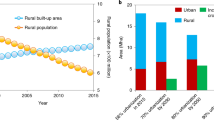Abstract
Urban agriculture in Cuba has rapidly become a significant source of fresh produce for the urban and suburban populations. A large number of urban gardens in Havana and other major cities have emerged as a grassroots movement in response to the crisis brought about by the loss of trade, with the collapse of the socialist bloc in 1989. These gardens are helping to stabilize the supply of fresh produce to Cuba's urban centers. During 1996, Havana's urban farms provided the city's urban population with 8,500 tons of agricultural produce, 4 million dozens of flowers, 7.5 million eggs, and 3,650 tons of meat. This system of urban agriculture, composed of about 8,000 gardens nationwide has been developed and managed along agroecological principles, which eliminate the use of synthetic chemical pesticides and fertilizers, emphasizing diversification, recycling, and the use of local resources. This article explores the systems utilized by Cuba's urban farmers, and the impact that this movement has had on Cuban food security.
Similar content being viewed by others
References
Carrion, M., R. Gonzalez, R. Gil, C. Rodriguez, and R. Martinez (1994). “Influencia de los Fertilizantes con Zeolita sobre el Rendimiento de los Cultivos,” in 90 Años dela Estación Experimental Agronómica de Santiago de las Vegas (pp. 201–212). Havana, Cuba, INIFAT.
Campanioni, N. (1996). “El Huerto Intensivo en la Agricultura Urbana de Cuba,” in Seminario Taller Regional “La Agricultura Urbana y el Desarrollo Rural Sostenible” (pp. 39–48), FIDA-CIARA-MINGAG.
Campanioni, N., A. A. Rodriguez, and M. Carrion (1997). “La Agricultura Urbana en Cuba: su participación en la seguridad alimentaria,” in Proceedings III Encuentro Nacional de Agricultura Organica (pp. 9–13). Villa Clara, Cuba.
Estrada, J. and M. T. Lopez (1997). “Los Bioplaguicidas en la Agricultura Sostenible Cubana,” in Proceedings III Encuentro Nacional de Agricultura Orgánica (pp. 28–32). Villa Clara, Cuba
Fernandez, E., B. Bernal, L. Vasquez, and H. Gandarilla (1996). “Manejo Integrado de Plagas en los Organopónicos,” Boletín Técnico No. 3 (42 p.). Habana, Cuba: Instituto de Investigaciones de Sanidad Vegetal.
Martinez-Vieira, R., B. Dibut, R. Gonzalez, and M. Acosta (1994). “Efecto de la Aplicación de los Biopreparados a Base de Azotobacter chroococcum sobre los Cultivos de Tomate y Cebolla en Suelos Ferralíticos Rojos,” in 90 años de la Estación Experimental Agronómica de Santiago de la Vega (pp. 167–184). Habana, Cuba: Editorial Academia.
MINAGRI (1995). Instructivo técnico de los organopónicos. Habana, Cuba: Ministerio de la Agricultura, 54 pp.
Rosset, P. and M. Benjamin (eds.) (1994). The Greening of the Revolution: Cuba's Experiment with Organic Agriculture. Melbourne: Ocean Press, 84 pp.
Rosset, P. M. (1997a). “Cuba: ethics, biological control, and crisis,” Agriculture and Human Values 14: 291–302.
Rosset, P. M. (1997b). “Alternative agriculture and crisis in Cuba,” Technology and Society 16(2): 19–15.
Rosset, P. M. (1997c). “The crisis of modern agriculture: toward an agroecological alternative,” in Feeding the World Without Poisons: Supporting Healthy Agriculture: Proceedings of the Fourth Pesticide Action Network International Meeting, May 17–21. Santa Clara, Cuba. San Francisco: Pesticide Action Network, 51 pp.
Rosset, P. M. and M. Moore (1997). “Food security and local production of biopesticides in Cuba,” ILEIA Newsletter 13(4): 18–19.
Author information
Authors and Affiliations
Rights and permissions
About this article
Cite this article
Altieri, M.A., Companioni, N., Cañizares, K. et al. The greening of the “barrios”: Urban agriculture for food security in Cuba. Agriculture and Human Values 16, 131–140 (1999). https://doi.org/10.1023/A:1007545304561
Issue Date:
DOI: https://doi.org/10.1023/A:1007545304561




